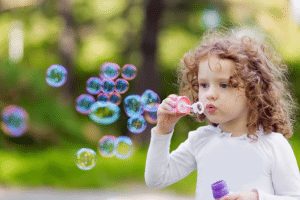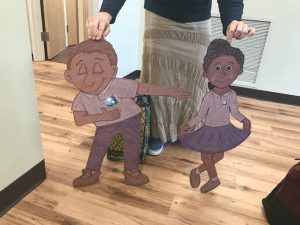What Is the Montessori Method? A Parent’s Guide to This Child-Led Philosophy
If you’ve ever watched a toddler confidently pour their own drink or a preschooler calmly choose a math activity without adult direction, chances are you’ve seen the Montessori method in action. But what exactly is it?
This approach to education, developed over a century ago by Dr. Maria Montessori, is rooted in the belief that children learn best when they’re given the freedom to explore, make choices, and follow their natural interests, all within a carefully prepared environment. The Montessori method is a philosophy that guides how we view children, learning, and development.
Let’s walk through what makes it different and why it works.
A Brief History of the Montessori Method
The Montessori method was developed in 1907 by Dr. Maria Montessori, Italy’s first female physician. Her early work with underserved children led her to a breakthrough insight: children thrive when they are trusted to take initiative and supported with the right tools.
She observed that when given access to child-sized furniture, developmentally appropriate materials, and uninterrupted time, children naturally engaged in meaningful, self-directed learning. This hands-on, respectful, and empowering model became the foundation of what we now call the Montessori method.
Today, it’s practiced in more than 140 countries and continues to influence modern educational thinking.
Core Principles of the Montessori Method
The Montessori method is defined by several key principles:
1. Child-Led Learning
Children are active participants in their education. Rather than following a strict teacher-directed schedule, they choose from a range of purposeful activities based on their interests and developmental stage.
2. Prepared Environment
Montessori classrooms are thoughtfully arranged to invite exploration. Shelves are low and open. Materials are displayed neatly, and each activity has a clear beginning, middle, and end.
3. Hands-On Materials
From sandpaper letters to golden beads, Montessori materials are designed to teach abstract concepts through touch and manipulation. Each is self-correcting, so children can learn through discovery.
4. Mixed-Age Classrooms
Children from a three-year age span (e.g., ages 3–6 in Primary) learn together. Younger students benefit from peer modeling, while older children solidify their understanding by mentoring.
5. Role of the Teacher (Guide)
Teachers act as observers and facilitators, not lecturers. They introduce materials individually, based on a child’s readiness, and then step back to let learning unfold naturally.
These principles reflect Montessori’s deep respect for the child as capable, curious, and intrinsically motivated.
What Happens in a Montessori Classroom?
A day in a Montessori classroom doesn’t revolve around bells or rigid transitions. Instead, students engage in long, uninterrupted work cycles (typically two to three hours), allowing for deep focus and flow.
Children might choose to:
- Build number sequences with the bead stair
- Wash a table using real water and tools
- Match color tablets or geometry shapes
- Practice early reading with moveable letters
Each choice supports a specific developmental skill, but more importantly, it strengthens the child’s sense of independence and confidence.
You’ll often find children working quietly, moving purposefully, and helping each other with tasks, all without direct instruction. It’s a model of peaceful, self-managed learning.
How Montessori Supports Development
The Montessori method supports all areas of early development:
- Cognitive: Through hands-on math and language work
- Physical: With fine motor tasks like pouring, buttoning, and writing
- Social-emotional: In mixed-age classrooms and collaborative settings
- Executive function: As children plan, choose, and complete their own work
One of Montessori’s biggest strengths is that it doesn’t rush development. It offers space for each child to move at their own pace, which reduces anxiety and boosts intrinsic motivation.
How MKU Brings Montessori to Life
We uphold the authenticity of the Montessori method while enriching it with two additional pillars: the Reggio Emilia approach and our proprietary DaVinci Kids STEAM curriculum.
In our Montessori-aligned classrooms:
- Children explore Sensorial Work, Practical Life, and Language daily
- Trained guides introduce materials using Montessori’s three-period lesson
- Classrooms include real tools, real responsibilities, and real purpose
- Each child’s path is personalized, guided by observation and readiness
Parents often remark that their children become more independent, responsible, and confident after just a few weeks. That’s the power of Montessori learning in action.
Common Misconceptions About Montessori
Let’s clear up a few myths:
- “Montessori is unstructured.” Montessori classrooms are highly structured, but the structure comes from the environment, not from rigid schedules.
- “Children do whatever they want.” Freedom in Montessori is always paired with responsibility. Children choose from appropriate, teacher-presented work.
- “Montessori is only for certain types of learners.” Montessori is designed for all children. It’s especially powerful for those who thrive in hands-on, respectful, and calm settings.
See Montessori in Action
Reading about the Montessori method is one thing. Seeing it in motion is something else entirely. We invite you to tour a Montessori Kids Universe location near you. Discover how the Montessori method, paired with Reggio Emilia creativity and DaVinci Kids innovation, creates a balanced and inspiring start to your child’s education.


